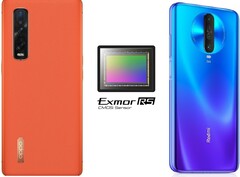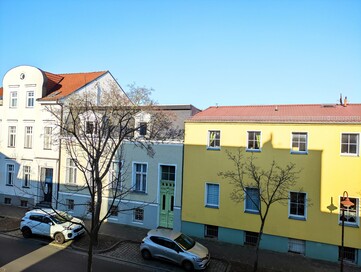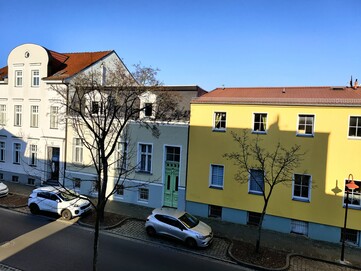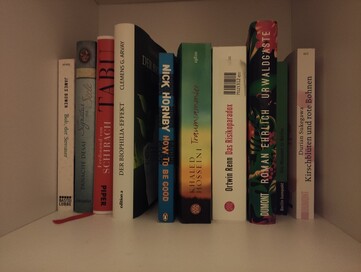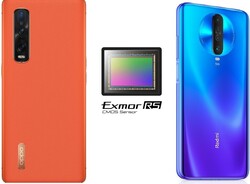After our camera comparison test of the Sony IMX686 in the Redmi K30 and the IMX586 in the OnePlus 7T Pro, we now subject the new 64 MP sensor from Sony to an extensive test against its IMX689 sibling model, which is found in the Oppo Find X2 Pro. Both current sensors of the Sony EXMOR RS series follow different concepts in comparison to their predecessor in order to produce the highest possible photo quality. In the following camera comparison you can find out whether the inexpensive Redmi K30 and its IMX686 is ahead in our comparison or if the much more expensive Oppo Find X2 Pro and its IMX689 sensor turns out to be more convincing.
All photos in this comparison are taken with the help of artificial intelligence. The camera settings are left in their factory default state.
Sony camera sensors in comparison
At 11.2 millimeters, the 1/1.4-inch Sony IMX689 is significantly larger than the 1/1.72-inch Sony IMX686. The Quad-Bayer color filter in both Sony IMX image sensors can combine 2x2 adjacent pixels into one large pixel, resulting in images with a resolution of 12 megapixels. The so-called 4-in-1 pixel binning increases the actual length of the individual pixels of the IMX689 from 1.12 µm to a calculated 2.24 µm, whereby significantly more light and correspondingly also more image information is captured than with the IMX686 with a pixel length of 0.8 µm and 1.6 µm, respectively. In theory, the light sensitivity in photos taken with the IMX689 should be noticeably higher in low light than its IMX sibling model.
Daylight photography
Even under very good lighting conditions, differences between the rear camera modules of the Oppo Find X2 Pro and Redmi K30 become evident. Compared to the Find X2 Pro, the Xiaomi phone often lacks sharpness and details. Due to the larger pixels of the Sony IMX689, there's also hardly any image noise in relatively good lighting conditions; on the other hand, noise starts to appear with the Redmi mobile phone when the sky is overcast (see here). The Oppo smartphone also has the better dynamic range, while the Redmi K30 looks somewhat over-sharpened, and the exposure is often not optimal either, so that pictures taken with the 64 MP Sony camera appear brighter. However, the Find X2 Pro also has visible shortcomings in this regard.
Night-time photography
As darkness sets in, the differences in photo quality between the current Sony camera sensors, the IMX686 of the Redmi K30 and the IMX689 of the Oppo Find X2 Pro, become increasingly apparent. While the Redmi K30 reveals a pronounced lack of sharpness in its photos and many details blur into each other, the Find X2 Pro's illumination of our subjects is visibly better. Pictures taken with the Oppo mobile phone look brighter and show a higher dynamic range. The Find X2 Pro produces better sharpness in photos taken with night mode too, as well as a higher dynamic range and more brightness.
Verdict - More megapixels alone won't do it
The camera comparison between the Oppo Find X2 Pro and the Redmi K30 mainly shows one thing again: Good photo quality is not a product of a high megapixel count in the camera sensor. The larger physical pixels of the IMX689 capture more light and therefore more image information, which ultimately results in better lit subjects, more sharpness and less image noise. Certainly, as in this comparison, software plays an important role in photo quality; however, our camera review of the Sony IMX586 shows that the differences between manufacturers aren't so massive and that in no case can software be the sole explanation of the differences in quality between the Redmi K30 and the Oppo Find X2 Pro - especially in dark environments. A similar picture is also drawn in our comparison review with the 108 MP Samsung camera in the Xiaomi Mi Note 10, which only uses small native pixels as well.
The Sony IMX689 clearly has the potential for taking better photos. This should be Sony's starting point: Combining pixel-binning technology with large pixels.


